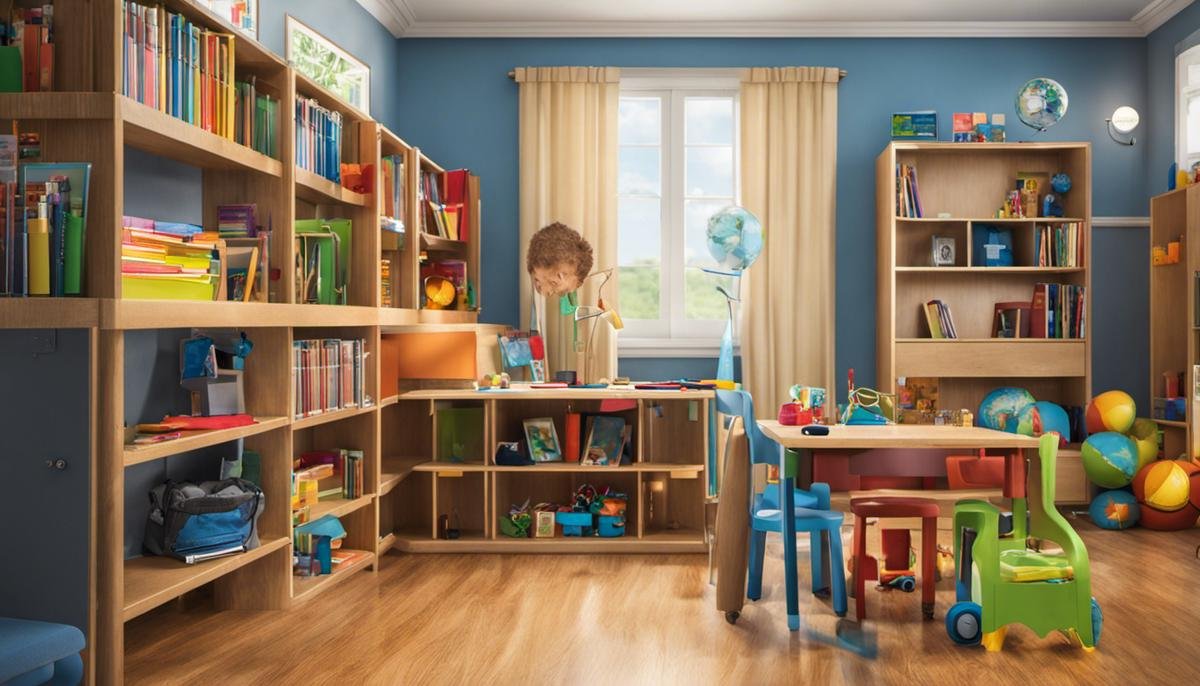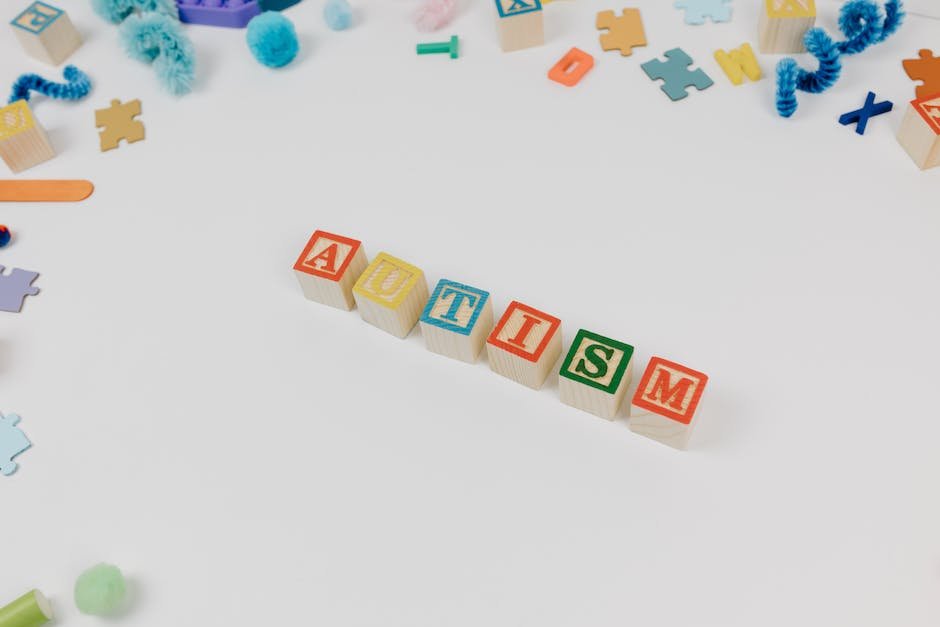
Living with autism is an interesting journey for both the individual and their family. The journey may present various challenges, but with a deeper understanding of the disorder, effective therapy and interventions, navigating the school system and harmonizing family life, it can become more manageable. An armory filled with reliable knowledge creates a powerful environment that allows those living with autism to thrive rather than just survive. This comprehensive guide aims to foster that understanding and to provide practical strategies that can be applied in various aspects of life; from home to school and extending into adulthood.
Understanding Autism
Embarking on the Journey of Understanding Autism
Starting with a simple yet powerful statement: Every child is unique, and those living with Autism Spectrum Disorder are no exception. With a world full of colors and flavors, they often bring into our lives a unique perspective and a sense of awe. But to fully comprehend their experience and provide them the support they deserve, we begin an enriching journey of understanding autism.
In this process, every page turned is a step forward, shedding light on the unknown and making it a little less intimidating. Here’s a glimpse into this remarkable journey.
#1. Initial Realization and Diagnosis
When children demonstrate diverse behavior or delayed developmental milestones, autism could be a possibility. Professional assessment is crucial at this juncture and early intervention brings out the best outcomes. Diagnosis is not a sign to fret, but an understanding that there’s a different, special roadmap to follow.
#2. Education and Acceptance
Learning about autism, its facets and how it affects a child’s life is the next station on this expedition. Reading up from reliable resources, attending workshops, and engaging with professionals in the field broadens the understanding of this neurological variation. This phase also nudges towards acceptance, paving the way for empathy, love, and support.
#3. Interaction with the Autism Community
Participation in autism support groups or online communities can provide plenty of insights, practical advice, and relatable experiences. There’s nothing quite comforting as knowing somebody else walked this path and emerged stronger.
#4. Constructive Communication
Individuals with autism often perceive and interact with the world differently. Adapting our communication techniques can be a game-changer here. Using visual aids, understanding non-verbal cues, encouraging two-way interaction, and allowing them space and time to express are simple yet mighty tools to connect with autistic children.
#5. Shaping a Supportive Environment
Creating an environment that caters to an autistic child’s needs enhances their skills and boosts their confidence. This encompasses the home setting, choosing the right school, and working closely with their educators and therapists.
#6. Advocacy and Empowerment
Becoming well-versed with rights and privileges of autistic individuals empower parents to advocate for their child. It becomes simpler to ensure all doors of opportunity are wide open for them to learn, grow, and thrive.
In the grand puzzle of life, every piece holds an essential place, adds to the bigger picture, and makes the journey worthwhile. Understanding autism is one such piece, a journey that molds parents into stronger, empathetic individuals ready to nurture their child’s potential. In the end, it isn’t just about understanding autism, but about celebrating their uniqueness, embracing the differences, and nurturing them to be the best version of themselves. There can’t be a more enlightening and rewarding journey than this!

Therapy and Intervention
The Incredible Impact of Therapy and Interventions in Autism Lives
Living in a world that often seems designed for the neurotypical, individuals with autism face unique challenges. These can sometimes be overwhelming for both the individual and their loved ones. However, with therapy and interventions, the lives of those with autism can improve immensely. Striding away from initial diagnoses, education, acceptance, and community interactions; we now delve into how targeted therapies and interventions work to shape new narratives and empowerment in the world of autism.
Tuesday afternoons might be time for a TV show, a play in a garden, or perhaps a swim for most families. But for those with autistic members, it might be time for a therapy session. It’s not just about repetition or routine, it’s about transforming lives, improving skills, and paving the way for a more independent future.
Applied Behavior Analysis (ABA) therapy, for example, is a scientifically validated approach that encourages helpful behaviors and diminishes harmful ones. It’s not about changing the person with autism. Instead, it’s about helping them adapt and flourish amidst life’s expectations. ABA therapy can greatly improve communication skills, increase focus, and assist in everyday tasks, making a tangible difference in the lives of those with autism and their families.
Occupational therapy is another beneficial intervention for autistic individuals. It focuses on boosting fine motor skills, promoting coordination, and aiding in carrying out daily tasks more smoothly. With these skills honed, a child with autism can experience a surge in autonomy, self-esteem, and overall quality of life.
Next up, speech and language therapy enter the scene, with a focus on improving communication. Given that individuals with autism often have varying communication challenges, this type of therapy is vital. It promotes effective expression of thoughts, building understanding, and enhancing social interaction skills.
Art and music therapy also play a crucial role in offering an alternate medium for self-expression. The soothing rhythm of the music or the captivating swirls of paint offer a safe space. It might not be verbal, but it’s a vibrant, beautiful language in itself. It’s a world without boxes or restrictions, just creativity giving wings to self-expression and exploration to stimuli response.
Moreover, equine and pet therapies have been seen to foster emotional connection, encourage empathy, and even teach responsibility. The bond between an individual with autism and a pet is truly heartwarming and therapeutic.
While therapies and interventions offer excellent supportive tools, it is important to remember that every person with autism is unique with differing needs and potentials. Seeking professional advice to find the right mix of therapies is crucial. What works wonders for another might not be your cup of tea. And that’s perfectly fine!
Remember, there isn’t a one-size-fits-all “cure” for autism because individuals with autism don’t need to be “cured”. They need support, understanding, and the right tools to thrive in their own beautiful way.
Through consistent, carefully chosen, individualized therapy and interventions, we can help push societal boundaries, foster growth, and enhance the life experiences of those with autism. It’s not just about coping anymore, it’s about thriving, adapting, and making the world a bit more comfortable for those who interact with it differently. Let’s make this world a little bit more diverse, a little more understanding, and a whole lot more accepting.

Navigating School With Autism
Paving a Path for Success: Tools and Strategies for Students with Autism
Navigating school life can be a challenging journey for children with autism, but thankfully there are many tools and strategies available that can assist in making the process smoother and more successful. While the first phase of our journey explored understanding, advocacy, and therapy, let’s venture deeper into the different approaches we can employ to further ignite growth, confidence, and inclusivity within the classroom.
Structured Learning Environment
Creating a predictable and organized environment often aids in success for students on the autism spectrum. They tend to thrive in settings where things are consistent, predictable, and visually organized. Teachers and parents can use visual schedules, labeled areas, and designated spaces for specific activities to create a sense of order. This also supports their ability to independently navigate through the school day.
Technology-assisted Learning
The advancement of technology opens doors to educational tools and resources that can greatly support children with autism. Apps and educational software provide interactive, engaging, and visually stimulating learning experiences. They also help in building and reinforcing critical academic and social skills in a way that’s both flexible and fun. One example is the Otsimo app, which is designed specifically for children with autism and speech delay, offering a wide array of games focused on core skills.
Sensory Breaks
Students with autism often find it challenging to handle an overload of sensory stimuli in a school setting. To deal with this, schools can create designated “sensory spaces” where children can take brief breaks to rebalance and decompress. These spaces can be filled with objects that promote sensory experiences, such as soft materials for touch, visually soothing items, or calming sounds.
Social Storytelling
Social stories created by The Gray Center are a wonderful resource to assist children with autism in understanding social norms and expectations. They use a storytelling format to explain social scenarios, providing clear and concise information about what to expect and how to react. This tool is particularly beneficial in preparing them for unfamiliar or challenging situations.
Peer Buddy Systems
Building social bonds can be challenging for children with autism. Schools can embrace a “peer buddy” system where neurotypical students pair up with students with autism for different activities. This fosters friendships, encourages inclusion, and enhances social interaction skills for all involved.
Inclusive School Policies
An inclusive learning environment plays a paramount role in enhancing the school life of a child with autism. Schools can proactively develop policies that promote understanding, patience, and acceptance. This involves training the staff and educating fellow students about autism, thus creating a welcoming space where everyone is considered equal.
Ultimately, it takes a village to ensure children with autism receive the support they require to prosper in school life. Parents, teachers, policy makers, and fellow students need to come together, armed with understanding and equipped with the right tools, ready to contribute to bridging the gap between challenges and success.
Embracing autism isn’t just about acceptance, it’s about ensuring every student is given a fair chance to shine in their own unique way. As we continue to promote growth, progress, and inclusivity, we’re creating a future where every child feels valued, capable, and understood.

Family Life and Autism
Going Beyond Accommodating Autism: Inspiring Growth and Enrichment in a Family Setting
When a family member has autism, the entire family navigates the journey together, adapting and growing along the way. To foster a nurturing and inclusive environment, we must delve beyond acceptance and into the realm of optimizing family life to inspire growth, understanding, and joy for all family members. Here are some helpful strategies that families can incorporate into their daily lives.
- Include Sensory Breaks in Routine Activities
- Fostering Communication and Understanding through Social Stories
- Technology-Assisted Learning
- Implement a Buddy System with Siblings or Peers
- Promote Inclusive Policies in School and Social Settings
- Embrace Structure in Learning and Daily Routines
Many individuals with autism experience heightened sensitivity to different sensory inputs. Integrating short ‘sensory breaks’ within daily routines can alleviate sensory overload. These might involve quiet, calm activities such as listening to soothing music, silent reading, or cuddling up in a cozy blanket. Sensory breaks create moments of serenity amidst bustling family life and can be a restorative practice for everyone, not just a family member with autism.
Social stories are an excellent tool for children with autism, helping them understand social concepts better. You can craft brief, personalized stories explaining everyday situations, what to expect, and how to respond. Reading and discussing these stories can help your child with autism, while also fostering empathy and understanding among all family members.
Technology can be a fantastic ally in the educational journey of an individual with autism. Be it interactive educational toys, speech to text software, or visually engaging learning apps, technology opens a myriad of possibilities for making learning fun and engaging for children with autism. Remember, it’s not about replacing human interaction but complementing it with supportive tools.
Pairing your child with a buddy – be it a sibling, classmate, or neighborhood friend – can enhance social skills and cultivate bonding. This partnership fosters a natural environment for teaching communication, social norms, and emotions. It encourages both parties to be patient, to negotiate, and to celebrate differences.
Advocate for inclusion, not just in school, but in every social sphere your family frequents. It includes public parks, sports teams, hobby classes, and friend circles. While it’s important the environment is receptive to your child’s needs, it should also allow them to participate fully. This gives an opportunity for other children and adults to interact with diversity and develops a sense of normalcy and acceptance.
Create structured learning environments using visual schedules, clear rules, and consistent routines. Children with autism often thrive when they know what to expect. Incorporating predictability into home and school environments can enhance learning and reduce anxiety, benefiting everyone in the family.
The takeaway here is the power of approaching autism not just as a condition to accommodate, but as an opportunity to enrich family life. Let autism initiate a positive change in your family, fostering empathy, inclusivity, and resilience. Embrace this journey wholeheartedly, and remember, you’re not just surviving; you’re thriving together as a family.

Planning for the Future
As inspiring homemakers, parents, and friends of those with Autism Spectrum Disorder, it is essential to promote long-term planning strategies that nurture and support their future. A fulfilling future is not solely based on therapy interventions, but on strategically preparing for adulthood and beyond. Let’s dive into the various planning strategies to help secure a brighter future for your loved one.
Consistent Therapy and Early Intervention Progression
While various therapy interventions like Applied Behavior Analysis (ABA), Speech Therapy, Occupational Therapy, amongst others, have been instrumental in building core skills and reducing behavioral difficulties, it is crucial not to halt this momentum. Just because someone has crossed the juvenile threshold does not mean that therapy should stop. Rather, it can shift towards more age-appropriate interventions, honing in on skills needed for independence.
Vocational Training
As individuals with autism approach adulthood, vocational training becomes highly beneficial. Vocational training provides real-world skills that can enhance self-esteem and independence, supporting eventual employment. Therapists, parents, or job coaches can help devise tailor-made vocational programs.
Planning for Independence
To embrace independence, teaching cooking, laundry, grocery shopping, and other home management skills should be woven into your child’s learning journey. The joy of watching your loved one prepare a dish with sheer excitement or perform a chore with ease is unmatched.
Transitioning to Adulthood
Just as any teen nervously anticipates the leap to adulthood, the same holds for young adults with autism. Planning, promptness, and patience can support this transition, where changes in therapists, educators, and routines may occur. Building a robust circle of support, filling it with mentors, medical professionals and counsellors can be beneficial.
Life Planning
Life planning is a key strategy in creating a fulfilling future for your child with autism. This involves thoughtfully contemplating the future – from estate planning to guardianship, creating a Special Needs Trust or drafting a Letter of Intent outlining the care for your child should you be unable to provide it.
Financial Planning
Just as we prepare financially for our children’s college education or future endeavors, it’s critical to plan for the fiscal needs of a child with autism. Having a proactive financial plan will help cover therapy costs, home care services, and other various living expenses. It’s never too late to start working with a financial planner who understands special needs scenarios.
Recreational Activities
All work and no play? Definitely not! Just like us, individuals with autism need recreational activities. Exposure to sports, art, music, or even simple joys like a walk in the park can contribute to a fulfilling life.
Inclusion in Decision Making
As advocates, it’s easy to keep making decisions expecting it would work the best for autistic individuals. However, when possible, encouraging them to participate in decision-making can raise their confidence, teaching valuable skills about choices and consequences.
Never overlook the power of love and understanding. Your unfailing smiles, gentle words, and patience provide a secure and loving environment. Remember, the journey to a fulfilling future is not sprint but a marathon. Such planning strategies will make sure that your loved one crosses the finish line strong! They have autism; they are not defined by it.

There is no one-size-fits-all approach when it comes to autism, but with diligent planning for the future, every individual can carve out their own path to success. Through gaining a better understanding of autism, employing effective therapies, navigating the school system effectively and fostering a supportive family life, it’s possible for each individual with autism to realize their full potential. This guide aims to offer a helpful beacon of direction as you sail the sea of autism, lighting the way for a brighter, more understanding, and inclusive future for all touched by the spectrum.




